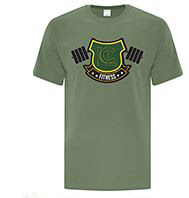
I have looked at the squat and increasing strength in the squat a number of times over the past few months. However, I have always sort of skirted around the issue of specific transducer strength. If you remember from before, a transducer is the factor/muscle group that limits a movement. In the case of the squat, that transducer is the lower back. I have outlined a number of ways to overcome stick points in specific parts of the movement, which in turn will help to strengthen the lower back, but never really looked at it directly. When I think of one movement that will help to address this issue with specific relevance to the squat it is the good morning.
A good morning is always performed in the same manner, yet has many different variations to it. Take the bar in a low bar rack position across the trapz and in the groove of the rear deltoid. Pull your shoulder blades together to help create a platform for the bar to sit in and keep the chest high preserving a nice lumbar curve. Keep a slight bend in the knees (just short of locked- athletic stance) and bow forward. Fight to keep the curve in your lumbar the entire way and keep the weight centered on your heals throughout the movement. Your depth will vary based on hamstring flexibility, but you are striving to get just short of parallel to the ground.
Narrow Stance Good Mornings: These are predominantly done as more of a hamstring strengthening movement, but your lower back will get a little action out of it. Stance width will be shoulder to slightly narrower than shoulder width.
Wide Stance Good Morning: This one simulates the squat very well. The wide stance forces you to bow forward the same as you would in the squat. It will simulate getting bent over in the hole of the squat and give you the strength to be able to pull the lift back to where you want it. The stance should be well outside of shoulder width, with your heals being 3' to 4' apart. Ensure your toes are pointed out on about a 40-45 degree angle. Again, no straight legs!

Seated Good Mornings: This is an advanced level movement that you must be very aware of what your body is doing and the position it is in. Take the bar in low rack position and walk back straddling a bench or box. Sit down on the bench or box and push your hips back so they are set and your lumbar curve is constantly preserved. Take a wide stance with the feet to ensure a solid base. Bow forward until your chest is parallel to the bench (just short of touching) and return back to upper seated position. Never sit fully up straight as the axial load on the spine can cause damage. Always remain a little forward.
WOD
3 Rounds for time
400 m run
21 KBS Guys @ 55 Gals @ 35
12 Pull Ups







